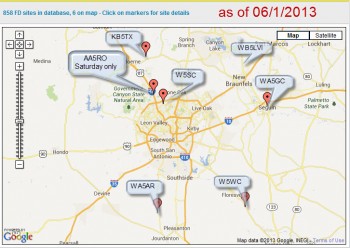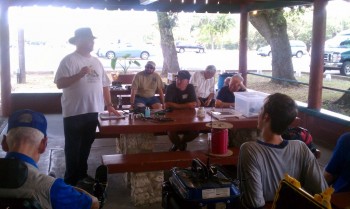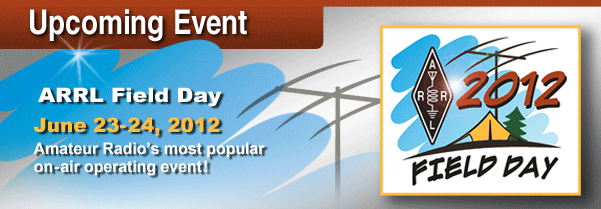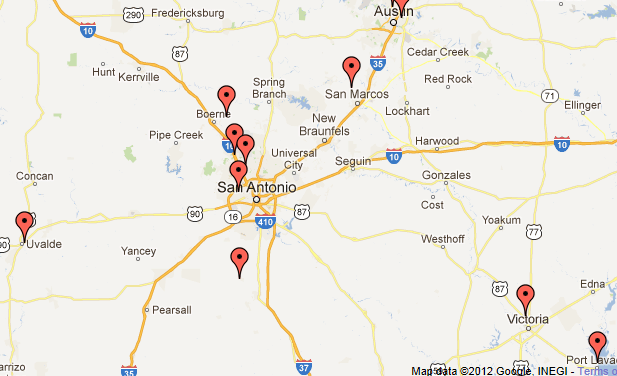FIELD DAY IS JUNE 22-23rd 2013
I’m currently compiling a list of clubs or individual stations who are making plans for Field Day 2013. If you want me to share your location and hours of operation (some clubs don’t run full 24 hours, and/or shut down during the night and resume in the morning), please send an email to info@sanantoniohams.org with “Field Day 2013” in the subject line to get my attention.
Info updated 06/11/2013
 Please include any details you want shared, such as a talk-in frequency especially if you are on private property or a hard to find location. Let us know if there are any admission fees (such as operating from a public or private park, etc.). If you require RSVP, please provide the official contact info for that purpose. If you are limiting the hours of operation, such as taking a recess during the middle of the night and resuming the next morning, let me know that also. I know you don’t just want folks to show up for meal time, especially if they aren’t a member of your club.
Please include any details you want shared, such as a talk-in frequency especially if you are on private property or a hard to find location. Let us know if there are any admission fees (such as operating from a public or private park, etc.). If you require RSVP, please provide the official contact info for that purpose. If you are limiting the hours of operation, such as taking a recess during the middle of the night and resuming the next morning, let me know that also. I know you don’t just want folks to show up for meal time, especially if they aren’t a member of your club.
After sifting thru the thousands of emails on my computer, I also visited the ARRL official site locator page to see what I could see.
And then I looked for San Antonio / Central Texas area on the map, and said “double wow!” I know of several clubs not shown on this map, as of today as of 06/11/2013, who plan on conducting a FD event. Click on the screen shot to the right for details. The little red map parkers are those FD locations registered as of 06-01-2013 with ARRL. The little comment boxes are the locations that I’m aware of, where clubs are planning their event. I’ve added some event stations below, from Bandera, San Marcos, Austin, Kerrville and Corpus Christi, that do not show up on the San Antonio metro map image that I posted here.
VE Testing Notes: There will be 2 VE Test Sessions active the morning of Field Day in the San Antonio metro area:
- SARC will be conducting a VE Test Session at 10am on June 22nd, at the Great Northwest Library off Grissom Road & Timberwilde Rd on the NW side of San Antonio. This is their normal date / time / location for such test sessions. Contact Pat AD5BR at 210-273-5927 or hamtests@gmail.com for info. Pat will have FD information available that morning for the new hams to go visit afterwards.
- GVARC will be conducting a VE Test Session sometime during the day on Saturday, June 22nd, at the site of their Field Day. See location info listed below.

 I spent about 8 hours at the AARO Field Day at Raymond Russell Park, where they almost ended up with a Marachi Band for entertainment (band went to the wrong pavilion), then moved on to visit the KARS Ham Club in Boerne before swinging back down south around midnight to the SARC Ham Club in Shavano Park.
I spent about 8 hours at the AARO Field Day at Raymond Russell Park, where they almost ended up with a Marachi Band for entertainment (band went to the wrong pavilion), then moved on to visit the KARS Ham Club in Boerne before swinging back down south around midnight to the SARC Ham Club in Shavano Park.
